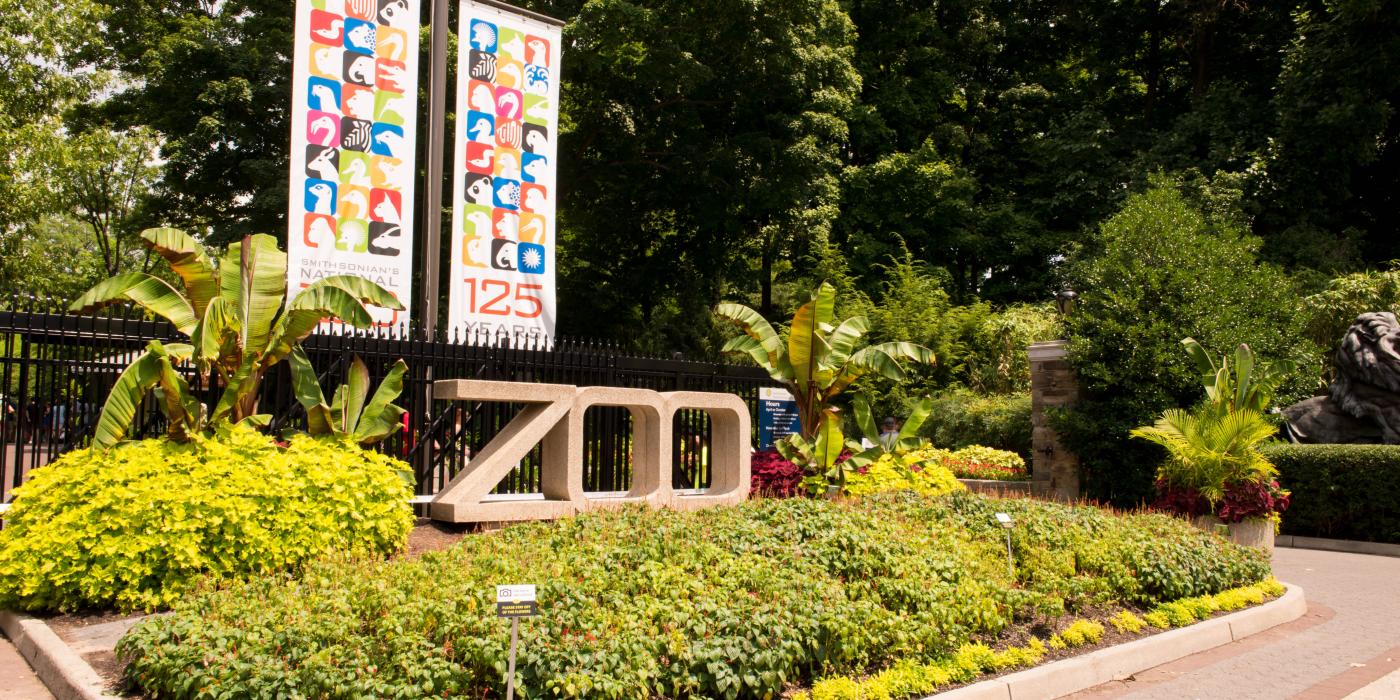COVID-19 Update

All Smithsonian museums, including the National Zoo, continue to be closed to support the effort to contain the spread of COVID-19. We are not announcing a re-opening date at this time and will continue to provide updates on social media and on our website. The health and safety of Smithsonian visitors, staff, volunteers and animals is a top priority. We are closely monitoring the coronavirus situation and maintain ongoing communication with local health officials and the Centers for Disease Control and Prevention.
Animal keepers and veterinary staff remain working on site at the Zoo and at the Conservation Biology Institute in Front Royal, Virginia to provide the usual highest quality care for the animals. The animal webcams remain online, but volunteers will not be operating them, so animals may not be visible at all times.
Additionally, the Smithsonian is postponing or canceling all public events, programming and gatherings through July 1, 2020.
Due to the rapidly changing nature of the situation, we are not announcing a reopening date at this time and will provide updates on a week-to-week basis on our websites. Follow the Smithsonian on Instagram, Facebook and Twitter for immediate updates, and follow the hashtag #NatZooZen for behind-the-scenes updates from our dedicated animal care team.
In the meantime, we invite the public to explore the Zoo online by visiting nationalzoo.si.edu for more online collections, live animal webcams and educational resources.
The health and safety of Smithsonian staff and the animals in our care is the number one priority.
As a novel virus, health officials are still working to learn more about COVID-19. The original animal source of the virus is still unknown, and thus trying to quantify the risk for the virus to transmit from humans back to animals is difficult.
The Zoo’s current response focuses on the safety of animals and people around the animals, knowing it will evolve as more information is learned. As such, the Zoo’s preparedness plan includes restricting behind-the-scenes access in all animal areas, cross-training animal care staff on essential functions and establishing protocols for use of personal protective equipment, hygiene and cleaning and employee self-screening and health management.
Veterinary staff at the Smithsonian Conservation Biology Institute have limited procedures to diagnostic, therapeutic and emergency care only. Delaying elective procedures and focusing on ill and emergent cases allows the veterinary team to preserve as much personal protective equipment (PPE) like masks and gloves, as possible. Preventive health care is optimized to ensure healthy animals stay healthy while limiting staff on grounds and minimizing human-to-human contact. Veterinary staff continue to provide daily care for the animals through a rotational staffing schedule.
Based upon evolving knowledge of COVID-19 and recommendations from the CDC, the Zoo increased personal protective equipment (PPE) effective April 6 with the following protocols:
- All staff in all areas must wear masks when within 6 feet of another person.
- All staff must wear masks when working with the specified taxa of high-level concern*. Masks must be work when working within 6 feet of the animal or when working in an area or with items in which an animal comes in contact (e.g., enrichment, food items/containers, yards/enclosures). This include all staff (e.g., animal care, commissary, facilities, contractors)
- Due to the global PPE shortage, zoo staff will use washable face coverings. Personal protective equipment will only be acquired through official channels.
- Staff will continue to practice good habits, hygiene and cleaning as outlined by Smithsonian/Federal/CDC regulations and guidance.
*Taxa of high-level concern: primates, felids (tigers, lions, cheetahs, clouded leopards, sand cats, fishing cats, bobcats etc.), mustelids (otters, skunks, ferrets), and herpestids/viverrids (meerkats, mongooses, binturongs, civets).
At the end of January 2020, the Zoo created a response plan for COVID-19. Preparing for infectious disease emergencies, which have the potential to impact our animals or are zoonotic diseases (meaning can go between people and animals), is not new to the Zoo. In fact, in October 2019, the Zoo hosted a workshop with partners and stakeholders from animal health and human health partners from Washington, D.C., Virginia, Maryland, the Association of Zoos and Aquariums, and other federal agencies to plan how to coordinate a response around an infectious disease emergency. At that time, avian influenza was the model disease, as it can be both devastating to animals and, as a zoonotic disease, infect people as well.
All of the advanced planning from the October meeting, was used by the Zoo’s epidemiologist and Animal Care leadership to craft the Zoo’s specific COVID-19 response plan. The Smithsonian’s National Zoo is one of only a handful of zoological institutions in the country with full time, public health- trained veterinary epidemiologists working at the Animal Care level to provide exceptional care and support to animals and staff.
The Zoo’s COVID-19 response plan works to protect its animals, as well as the staff who work with them on a daily basis. The plan was designed to be implemented in stages, depending on what the virus was doing in the United States. Because this plan was created early in the outbreak, it was vetted by multiple teams by the Centers for Disease Control and Prevention (CDC). Working with the CDC helped ensure the Zoo was doing everything it could to protect animals and humans, while the study of the virus was evolving.
As the outbreak progressed, the Zoo’s plan was shared with the North American zoo community, and has provided a structure and framework for other facilities — a much needed help and tool during a rapidly changing time.